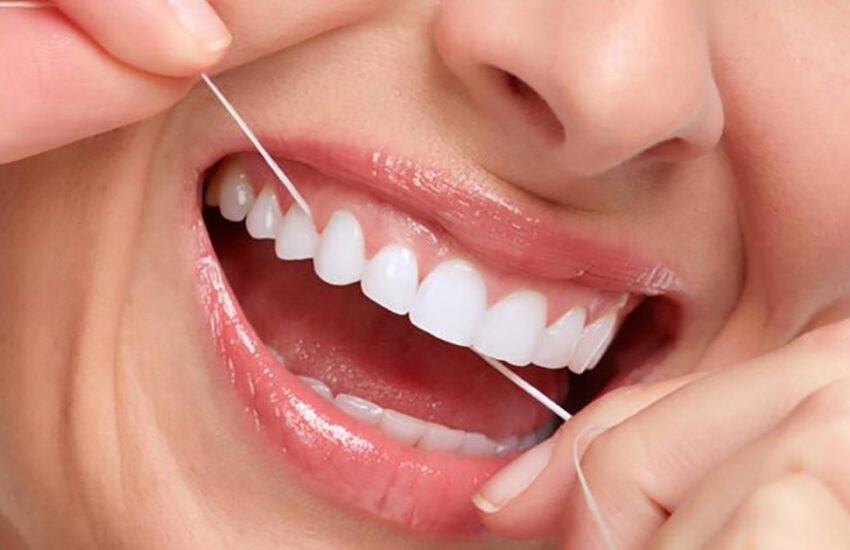Think of oral health & you tend to think of your teeth alone. The fact is gums have a very important role to play. You may have the pearliest white teeth, however, that does not necessarily mean that you have good oral health.
What Really Is Gum Disease?
The beginning of gum disease is when plaque starts to build up along the gum line. This, in turn, can lead to infections leading to gum disease and tooth decay. A major disease caused by plaque is gingivitis, which may result in:
- Inflamed gums
- Tenderness & redness
- Swelling
- Bleeding
There are also chances of developing periodontitis, an advanced form of gum disease. Periodontitis affects the bones that hold the teeth in place. If periodontitis isn’t treated early it can affect your gums, bones as well as tissues. With advanced periodontitis, the fibers & bone supporting your teeth are destroyed. In such cases, you may also require tooth extraction.
It is important that early signs of gum disease be identified. Some of these signs include:
- Bad breath
- Consistent bad taste in the mouth
- Loose teeth
- Bleeding gums
- Swollen & tender gums
The good news however is that gum disease is preventable. Here are seven handy tips that can keep gum disease at bay:
#1 Brush Your Teeth
It is important to brush your teeth after every meal. This ensures that no food particles are left trapped between your teeth & gums. It is important to follow the right technique while brushing. Some of the guidelines to follow include:
- Use a soft-bristled toothbrush. A battery-powered toothbrush can also come in handy in removing plaque.
- Ensure that the toothbrush is replaced frequently.
- Teeth need to be brushed at an angle of 45 degrees to the gums.
- The toothbrush should be moved in short strokes.
- Ensure that the inside of the front teeth is cleaned by turning the brush vertically.
Also, it is important to remember to clean your tongue.
#2. Use Fluoride Toothpaste
While several brands of toothpaste are vying with each other in their claims to reduce gingivitis, remember to choose one which contains fluoride, and has ADA approval.
#3. Floss
Flossing helps you reach areas that are hard to reach with a toothbrush. It is therefore important to floss at least once everyday. It particularly helps you remove trapped food particles as well as any plaque.
#4. Regular Cleaning
It is very important to get regular cleanings done to be able to have plaque & tartar removed. Some prefer teeth cleaning and teeth whitening on regular basis as well. That way you can ensure that they do not translate into gum disease. In fact, frequent dental checkups help dentists to catch any sign of gum disease early. In fact, regular brushing, flossing & cleanings can reverse gingivitis.
#5. Quit Smoking
Among the many reasons to quit smoking, one is that smoking weakens your immune system, and it is therefore, that much harder to fight gum disease. Besides once your gums are damaged, smoking does not allow them to heal. By quitting smoking, you won’t just do your lungs a favor, your gums will thank you too!
#6 Use A Therapeutic Mouthwash
It is important to remember that there are two kinds of mouthwashes available- cosmetic & therapeutic. It is important to choose therapeutic mouthwashes that reduce plaque & tartar, and therefore prevent gingivitis. Although the use of a mouthwash isn’t a substitute for brushing or flossing, its use is important to help remove food particles & debris from the mouth. You can count on a therapeutic mouthwash to:
- Prevent the build-up of plaque
- Reduce the speed at which tartar builds up
- Remove food particles from the mouth
- Preventing overall gum disease
In choosing a mouthwash, it is important to look for the ADA seal to make sure that the product is safe & effective. The ADA advisory is for children below 6 years to not use mouthwash.
In addition to the above tips, it is also important to take care of your diet. Some of the food items to be incorporated in the diet include:
- Fruits & vegetables that are high in fiber
- Black & green tea
- Dairy products as they tend to increase the production of saliva
- Foods that contain fluoride
- Sugar-free gum also improves saliva production
On the other hand, it is important to avoid the following foods:
- Carbonated drinks
- Alcohol
- Sticky candies
- Starchy food
To Sum Up
Gingivitis and even periodontitis does not always come with early symptoms. It is only when the disease progresses that you notice symptoms such as receding gums, loose teeth, pus, bad breath, bleeding gums & more. It is therefore, imperative that oral hygiene is maintained & frequent dental check-ups are done so that the disease can be checked before it progresses too far. Some of the common risk factors for developing gum disease include:
- Poor nutrition
- Obesity
- Teeth grinding
- Stress
- Genetics
- Smoking
- Diseases that impact the body’s inflammatory system such as diabetes, cardiovascular disease, rheumatoid arthritis.
While some of these risk factors cannot be prevented, some others can be kept in check. Particularly if you are at risk of developing gum disease, you need to ensure you schedule dental appointments at regular interval.
Here’s to your teeth & gum health & your overall well-being!
